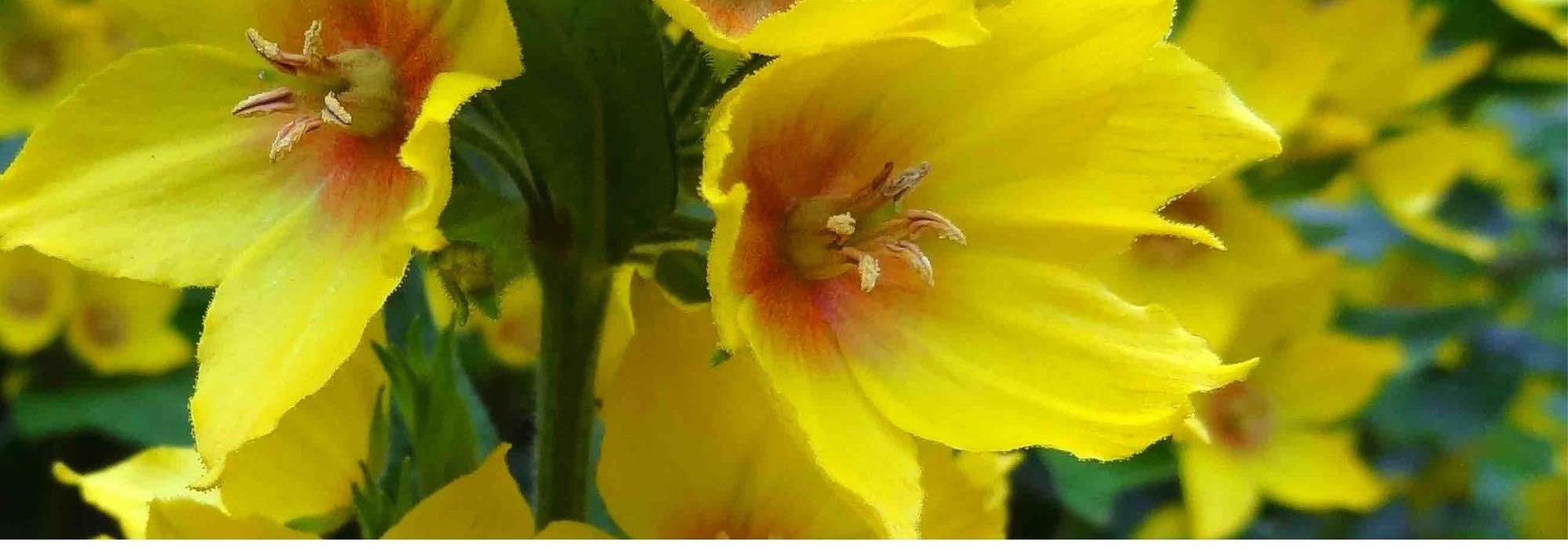
Choosing a Lysimachia
Discover this beautiful generous perennial.
Contents
Vigorous perennial for fresh to moist soil, Lysimachia grows quickly and easily colonises spaces. However, the different species and varieties temper this initial observation. In consistently fresh, even moist areas, it brings its light, varied and original flowering and foliage, along with its often graphic habit. Deciduous, it naturally grows in moist meadows, at the edge of cool woodlands, and by ponds. A perennial with more or less running rootstock, it should be used with care, selecting the variety or species wisely to integrate it thoughtfully into a border or to deliberately invade a challenging space. Its appearance makes it suitable for all types of gardens, both natural and contemporary.
Choose by height
In the family of Lysimachia, Lysimachia nummularia, a creeping groundcover 5 to 10 cm tall, and Lysimachia punctata, a tall perennial reaching 1.20 m, have little in common! You can choose Lysimachia based on three height types that determine their use:
A creeping Lysimachia, groundcover, very prolific like its taller sisters:
- The Lysimachia nummularia has very small rounded green leaves measuring 2 cm. It blooms all summer with small bright yellow flowers. It is an excellent groundcover for cool to moist areas. We also offer two cultivars in our shop: Lysimachia nummularia ‘Aurea’ and Lysimachia nummularia ‘Goldilocks’, which have particularly golden, very bright foliage. Their flowering is less noticeable in a tone-on-tone yellow, but their beautiful foliage compensates advantageously. In full sun, they have golden foliage, and in partial shade, it turns chartreuse green.
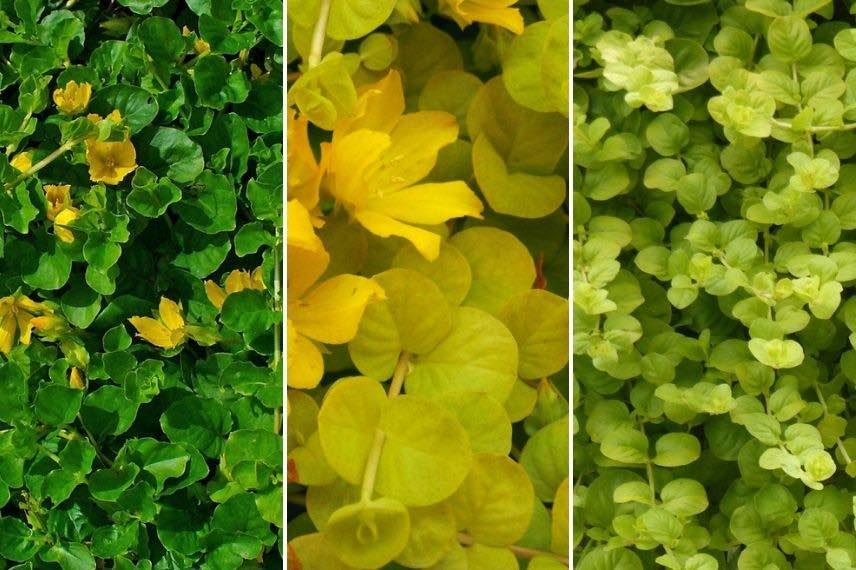
From left to right, Lysimachia nummularia, nummularia ‘Aurea’, nummularia ‘Goldilocks’
A medium-sized Lysimachia:
- The Lysimachia vulgaris, found at low altitudes in Europe, is a beautiful vigorous and highly floriferous specimen, reaching a height of 75 cm when mature, capable of spreading up to 4 or 5 m in moist soil. It blooms from May to September with upright spikes of yellow flowers resembling candles.
A large Lysimachia:
- The Lysimachia punctata, or punctate Lysimachia, reaches a height of 1.20 m at maturity. In summer, clusters of bright yellow flowers, arranged in successive tiers, illuminate its rich green lanceolate foliage. Naturalised in France, it quickly invades spaces, preferably moist, although its vigour adapts to all conditions! Its rhizomes are weakly running, but its root system is deep.
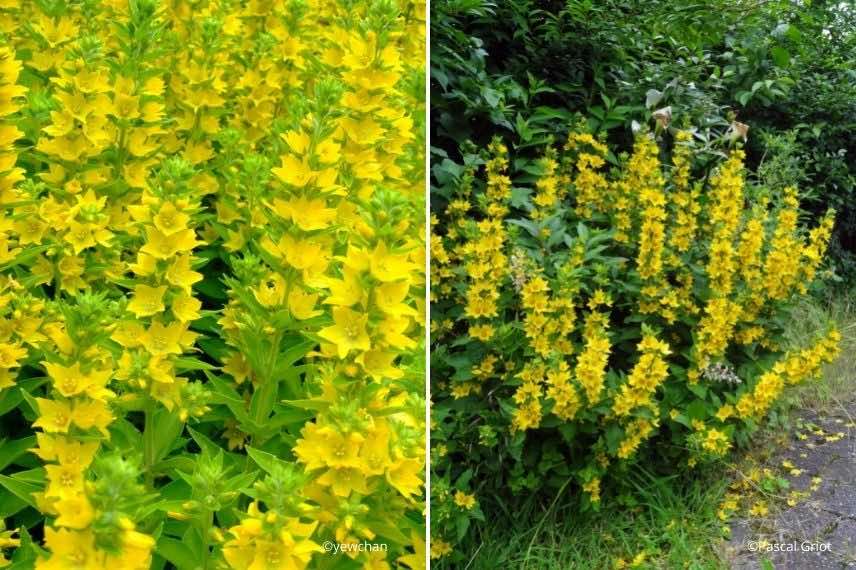
Lysimachia vulgaris and Lysimachia punctata
Choose by flower colour and shape
Aside from Lysimachia nummularia, species and cultivars of loosestrife have heights ranging from 70 cm to 1.20 m and exhibit an upright habit. They display very different foliage and flowering characteristics from one another. Yellow, white, or purple, their flowers come in various forms, star-shaped, solitary, or clustered in spikes.
- The Lysimachia clethroïdes, or Chinese loosestrife, is a botanical species that bears elongated clusters of curved white flowers, giving it a unique and graphic appearance. Also known as swan-neck loosestrife, the way its spikes curve, wide at the base and tapering at the ends, all pointing in the same direction, is remarkable. It blooms in July and August. It is one of those vigorous loosestrifes that should be planted with the understanding that it will quickly colonise the space. Notably, its foliage, opposite on the stems, lanceolate, bright light green, turns red and orange in autumn.
- The Lysimachia ephemerum is a beautiful species, interesting for its light and graceful habit, tall and slender. Of small stature, it bears narrow and elongated spikes of small star-shaped white flowers infused with mauve. The flower clusters can reach 30 cm in length. Its foliage is silver. The plant reaches 1 m in height at ripeness. It can be found in the wild in the Eastern Pyrenees and Aude. It is an ideal bank plant.
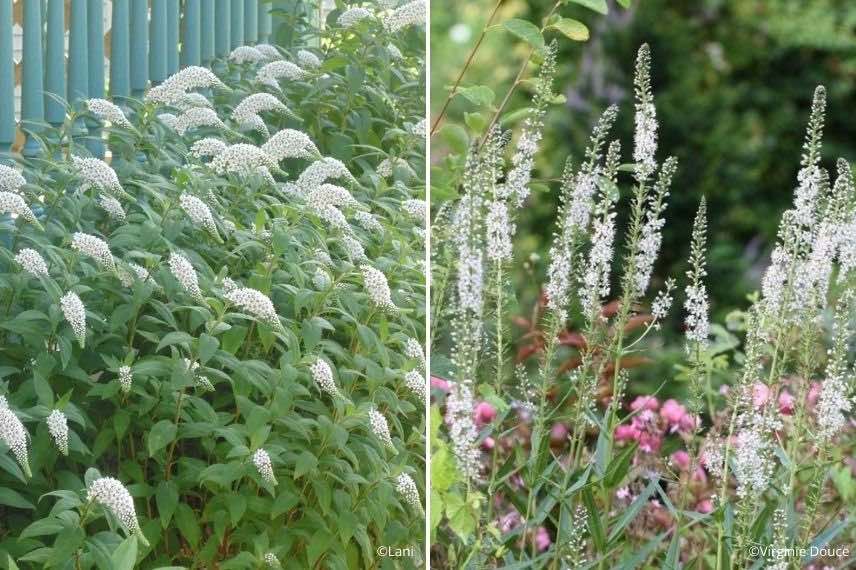
Beautiful white loosestrifes, Lysimachia clethroïdes and Lysimachia ephemerum
Discover other Lysimachia
View all →Available in 1 sizes
Available in 2 sizes
Available in 2 sizes
Available in 1 sizes
Available in 1 sizes
Available in 1 sizes
Available in 1 sizes
Available in 1 sizes
Available in 2 sizes
Available in 1 sizes
Choose according to the colour and shape of the foliage
Lysimachus have interesting foliage, with different shapes, often lanceolate, sometimes opposite when green. Some cultivars are adorned with variegated or very dark foliage, beautiful and original.
- The Lysimachia punctata ‘Alexander’ is a very interesting variety: smaller than the species type, 70 cm at ripeness with a relative spread of 50 cm, it boasts light green foliage widely variegated with white and frequently edged with pink. Truly lovely! It offers an intense golden yellow flowering in July and August, with star-shaped blooms on upright stems. The overall effect is very bright, giving a silver hue depending on the light.
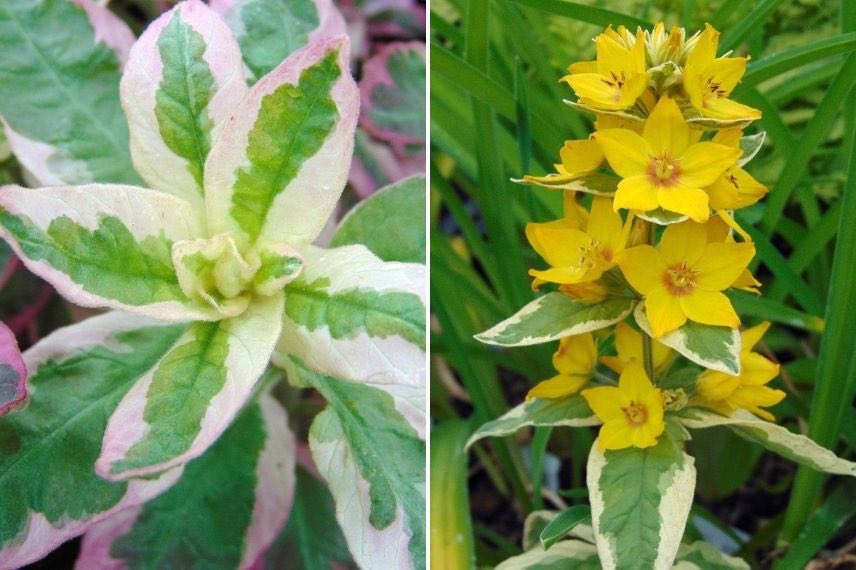
The Lysimachia punctata ‘Alexander’, full of assets and light
- The Lysimachia ciliata ‘Firecracker’ is an original with beautifully coloured chocolate leaves, tinged with purple in spring, becoming a bit greener in summer. Lanceolate and downy, the leaves can reach 15 cm in length. Depending on the light and season, they vary their beautiful colour from violet to dark green. Cheerfully illuminated by small bright yellow flowers from June to August, this Lysimachus takes on a yellow-orange and coppery hue in autumn. Richly coloured, it forms a clump 1 m high and 50 cm wide, spreading quickly.

The stunning foliage of Lysimachia ciliata ‘Firecracker’ contrasting with its flowering
Read also
12 perennials for heavy, wet soilChoose according to use
We have seen that several Lysimachia are keen to invade space and spread widely in moist and even heavy soil. This ability may interest you under certain conditions: a somewhat neglected or inaccessible area, a large expanse to cover, or a bank to stabilise. In this case:
- To colonise a bare area: as mentioned earlier, some Lysimachia are quite vigorous. For this purpose, the varieties to adopt are Lysimachia vulgaris and Lysimachia clethroïdes. They will leave little chance for companion plants unless you contain them with a rhizome barrier. To stabilise a bank, all species, except Lysimachia ephemerum and Lysimachia atropurpureum, are suitable due to their powerful and deep root system.
Now let’s talk about Lysimachia that can be planted alongside other perennials, ideally in a fresh soil bed. If your soil dries out in summer, you will see them suffer. If your soil is very wet, their growth will likely be more intense than desired.
- In the company of perennials with similar conditions, favour varieties such as Lysimachia punctata ‘Alexander’ and Lysimachia ciliata ‘Firecracker’. Lysimachia ephemerum is also quite suitable, though it may have some difficulty adapting. It will maintain a limited footprint in the soil. Pair them with Rodgersias, Veronicastrums, and Filipendules, or even with Salicarias.
A final variety to choose if you have well-drained soil.
To conclude, let’s mention the Purple Loosestrife or Lysimachia atropurpurea ‘Beaujolais’. It prefers well-drained soil. It may tolerate dry soil in shaded conditions. Short-lived, it is a perennial that you can try while waiting to plant something else or hoping it self-seeds and wanders through the garden. It is very pretty and uncommon, featuring wine-red spikes in summer, set against grey-green foliage that turns purple.
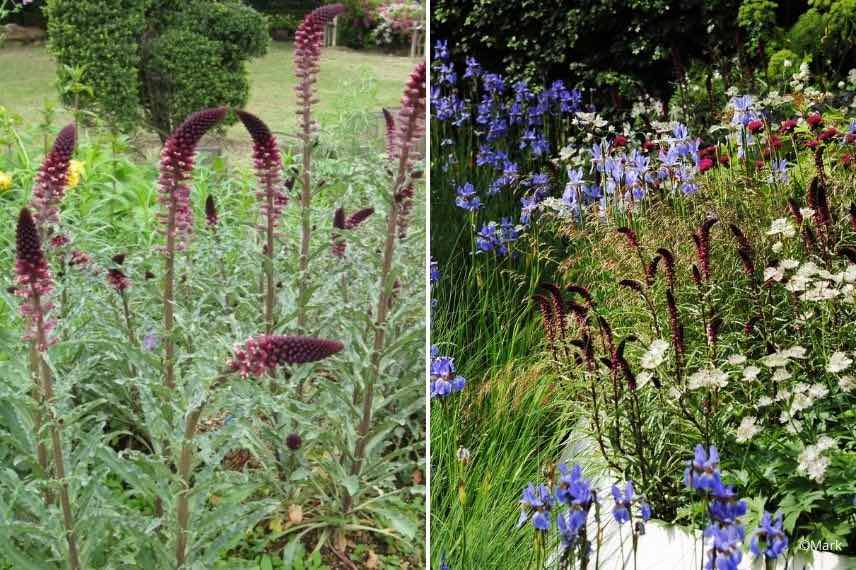
The Lysimachia atropurpureum ‘Beaujolais’, on the right in situ at the Chelsea Flower Show
- Subscribe!
- Contents
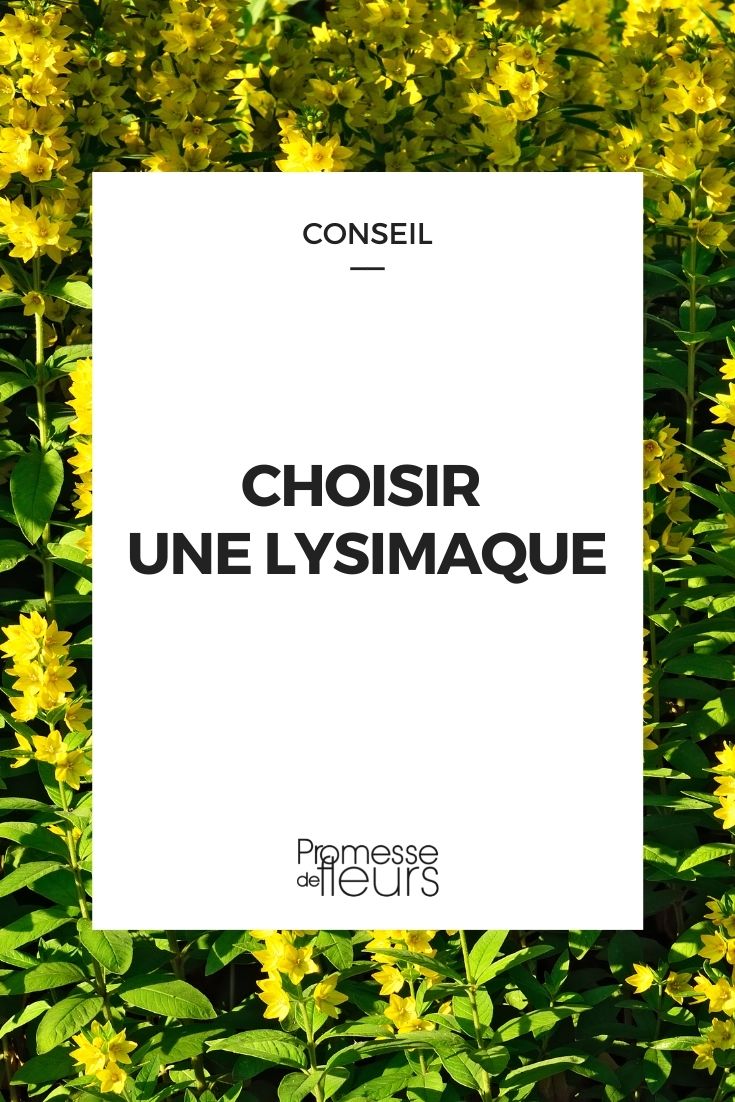
































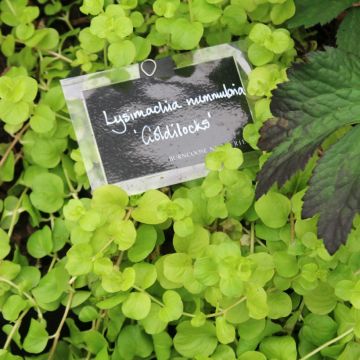

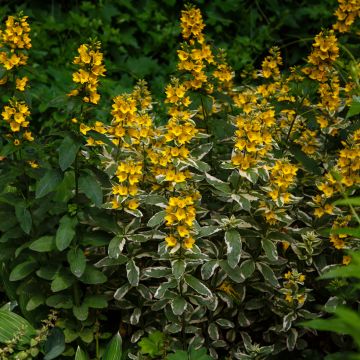
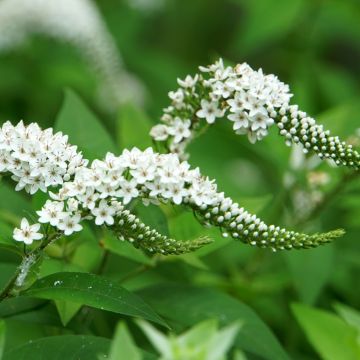
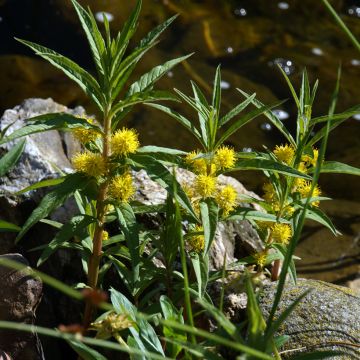
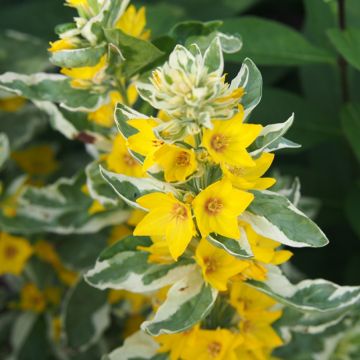
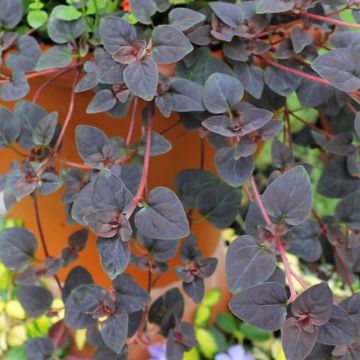
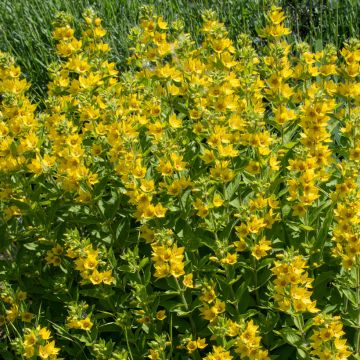

Comments